Welfare reforms likely to deliver no significant savings in “all pain and no gain” scenario, according to new analysis.
New analysis following ‘Pathways to Work’ green paper projects reforms will likely only deliver savings of £100M by 2030 - 2% of the £5bn claimed by the government.
The additional costs will come from increased NHS demand, reduced spending from disabled households and costs from appeals against the cuts.
The analysis also shows previous cuts to PIP have failed to produce material savings for the Treasury, according to the UK’s only disability think tank The Disability Policy Centre.
New research from the UK’s only disability think tank, The Disability Policy Centre, reveals the government’s welfare reforms are likely to deliver savings of £100m by 2030, a mere 2% of the £5bn claimed by the Government.
The analysis projects any potential savings outlined in the ‘Pathways to Work’ green paper will be offset by a range of unintended costs elsewhere across the system, in particular resulting from the tightening of Personal Independence Payments criteria.
These include increased pressure on the NHS as some disabled people seek alternative support, a fall in spending from disabled households with less disposable income and additional legal costs from appeals against the cuts (See ‘Table 1’ in Notes for breakdown).
Previous attempts at similar reforms to the welfare system failed to produce the savings they claimed they would. Plans to cut £18bn in disability benefits between 2016 and 2021, for example, actually resulted in savings of £0.8bn at most - only 8% of what was initially claimed (See ‘Table 2’ in Notes).
The research examined previous government reforms since PIP’s introduction in 2013 and compared governments’ projected savings with actual savings using reports from The Office for Budget Responsibility (OBR) and House of Commons, as well as reviewing legal decisions and calculating tax impacts using recognised fiscal multipliers (See full methodology in Notes).
Arun Veerappan, Interim Research Director of the Disability Policy Centre, who conducted the new analysis said:
“The government’s welfare reforms as set out yesterday risk making life much harder for disabled people whilst producing taxpayer savings equivalent to the price-tag of a Premier League striker - amounting to all pain and no gain scenario.
“Previous attempts to reform Personal Independence Payments, in particular, have failed to produce anywhere near the savings successive governments claimed they would - and the same pattern will play out here without further changes.
“Despite there being little net benefit to the taxpayer, many of these changes will be truly seismic for disabled people in this country, and as such should be accompanied with an impact assessment until waiting next week when it will be overshadowed by the Spring Statement.
“The silver lining here is that the Government still has time: they are rightly consulting on elements of PIP and, as a green paper, many of these reforms can and must be consulted on further to make life easier for disabled people, not worse.”
Chloe Schendel-Wilson, Director and Co-Founder of The Disability Policy Centre, said:
“The ideological problem unpinning the failure here is the framing from policymakers on seeing disabled people as a drain on our economy. Through this lens there are only ‘bills’ in need of ‘axing’.
“When the reality is, if provided with the necessary support when required, disabled people are entrepreneurs, scientists, innovators, musicians and shop owners, they’re pub-going, high-street shopping consumers and they’re taxpayers providing critical input into our economy, our society and the success of our country. When faced with stalling productivity, the Treasury should be viewing disabled people as an untapped catalyst for much-needed growth, not the drag they’re made out to be.
“Despite these initial shortcomings, this Government has proven it is very capable of listening and engaging with the disability sector to get things right for disabled people and for the country - and we believe they could do so again here.
Notes to Editors
Spokespeople available for interview on request, please contact louie@dispolcentre.org/ 07748 102192 or Chloe Schendel-Wilson, Co-Founder and Director of the Disability Policy Centre on chloe@dispolcentre.org
Data
Table 1: Breakdown of costs from PIP cuts
Breakdown of £5bn “Saving”
£bn (2025-2030)
Planned Saving
£5.0bn
Not Workable or Feasible
- £2.8bn
Additional NHS and Social Care Costs
- -£1.2bn
Loss of Disabled Household Spending
-£0.5bn
Additional Admin and Tribunal Costs
- -£0.4bn
Net Saving
- £0.1bn
Table 2: Planned savings compared with actuals from 2016-2021 (£bn)
Proposal
Planned Saving
(2016-2021) £bn
Issue
Replacing DLA with PIP
£7.5bn
Hard to exclude complex conditions in practice
Restricting Mental Health Conditions
£3.7bn
Ruled unlawful and discriminatory in 2017
Lower Awards for Use of Aids
£6.5bn
Abandoned as completely unfeasible in 2016
Total Savings Promised
£17.7bn
Actual Savings Delivered
£0.8bn (8%)
Mainly due to reassessments
Methodology:
Examined announced and planned proposals from the Department for Work and Pensions (DWP) and previous governments since PIP’s introduction in 2013, analysing projected savings from declared and different measures up to 2021.
Compared projected savings with actual savings using Office for Budget Responsibility (OBR) and House of Commons reports, assessing how much of the proposed £18bn in cuts from 2016-2021 were actually delivered.
Reviewed legal and tribunal decisions to assess how past attempts to restrict eligibility (often without consultation) were overturned in court, limiting the effectiveness of proposed cuts.
Assesses outcomes and proposals of 2015-2016 consultation which included options to reduce claimant awards if only scored for aids and appliances, reflecting the same idea outlined today.
Modelled delivery success rates for current government proposals, using past OBR data on implementation challenges and recognising that these proposals build on previous approaches.
Calculated broader fiscal impacts using OBR and OECD fiscal multipliers, incorporating third-party studies on social security spending as well as on welfare impacts, to estimate effects on NHS demand, disabled household spending, and unintended system costs.
Projected administrative and tribunal costs by analysing National Audit Office (NAO), DWP, and OBR data on reassessment rates, appeals, and the financial burden of increased case reviews.

